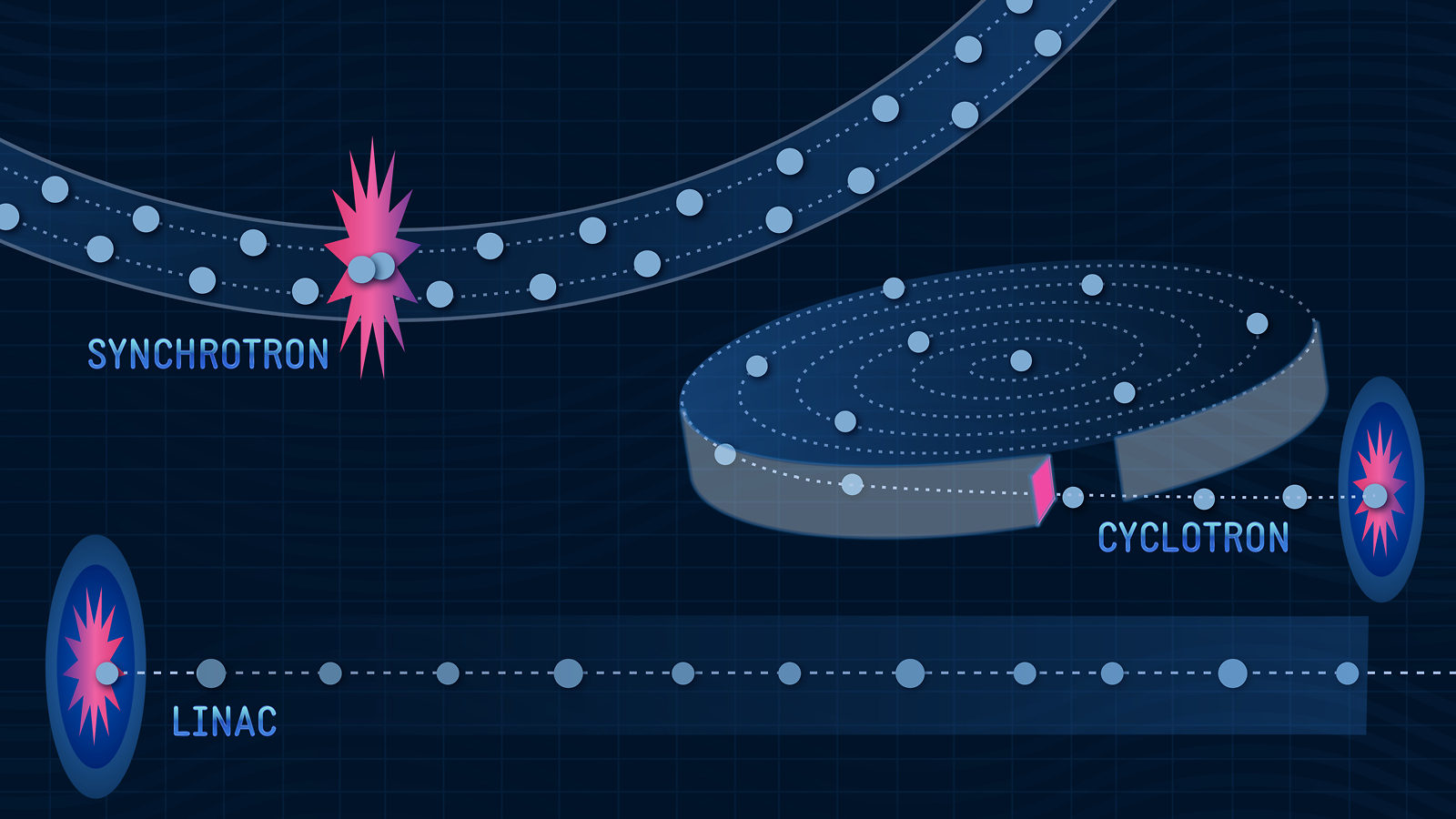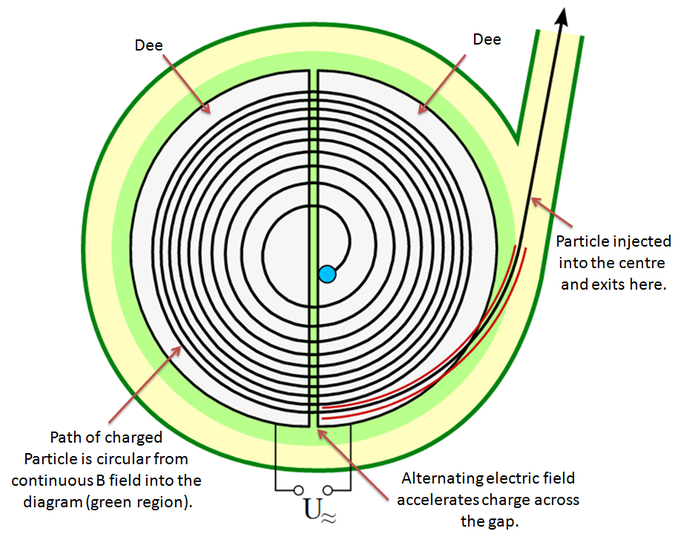Particle Accelerators
Definition
A particle accelerator is a device which uses a combination of electric and magnetic fields to propel charged particles to very high speeds. Electric fields increase the magnitude of the velocity and magnetic fields change the direction of the velocity. Both types of fields accelerate particles in different ways.
There are three main types of particle accelerators: linear accelerators, cyclotrons and synchrotrons - each of which works in a slightly different way.

Linear Accelerator
A linear accelerator, or linac, is a type of particle accelerator which uses a series of tubes with gaps to accelerate charged particles down a straight line. The polarity of the tubes is alternated so that the tube in front of a particle is always attracting the particle forwards. The length of tubes and frequency of the signal varies depending on the initial velocity and acceleration of the particles.
Linear accelerators are commonly used for the initial acceleration in a particle collider complex, like the Large Hadron Collider complex, and for medical purposes such as radiotherapy and production of medical isotopes.

Cyclotron
A cyclotron is a type of cyclic particle accelerator, which accelerates a particle along a spiralling path. It is formed of two semicircular electrodes, called dees, and the particles are accelerated as they pass over the gap between them. Cyclotrons can be used for very similar purposes to a linear accelerator.

Synchrotron
A synchrotron is another type of cyclic particle accelerator, descended from the cyclotron, where particles travel around a closed loop track instead of a circular area to spiral out from. As the speed of the particles increases, the strength of the magnetic field which keeps the particles on course also has to increase. This synchronisation is where the synchrotron gets its name from. Synchrotrons are usually used for scientific research in particle physics - for example, the famous Large Hadron Collider is a 27-kilometre-long large-scale synchrotron.
Unlike linear accelerators or cyclotrons, a synchrotron requires particles to enter with a sufficiently high initial velocity. Because of this, synchrotrons usually receive particles from other particle accelerators as input - for example, the Large Hadron Collider gets its protons from a linear accelerator leading into a series of synchrotrons of increasing size.